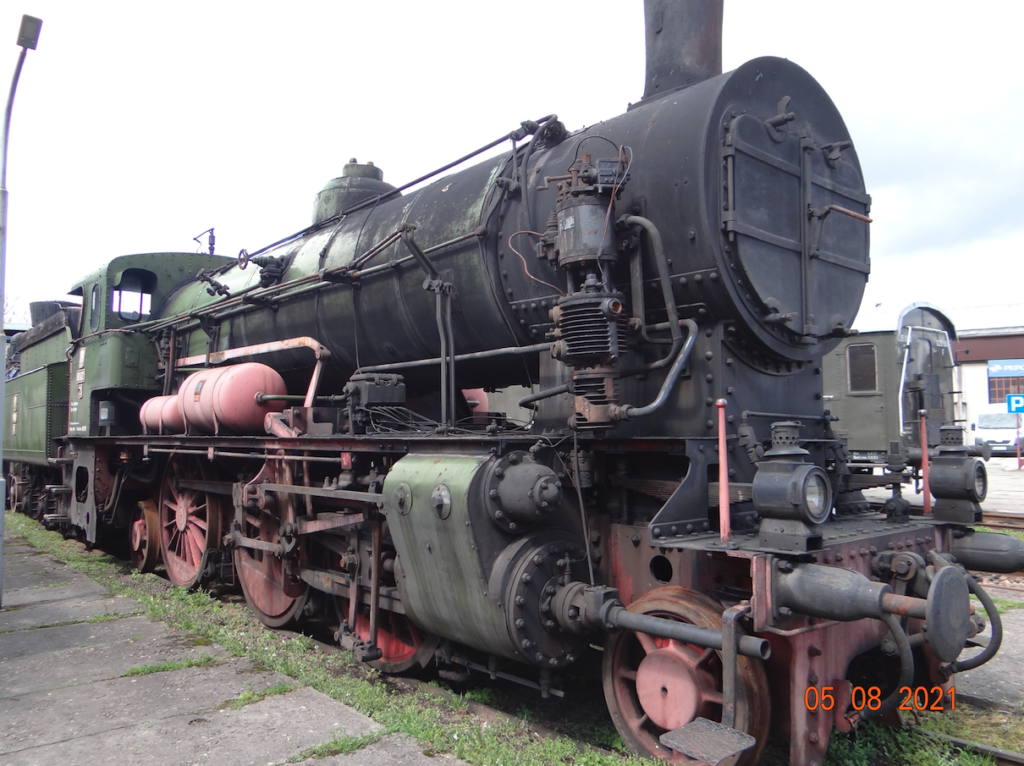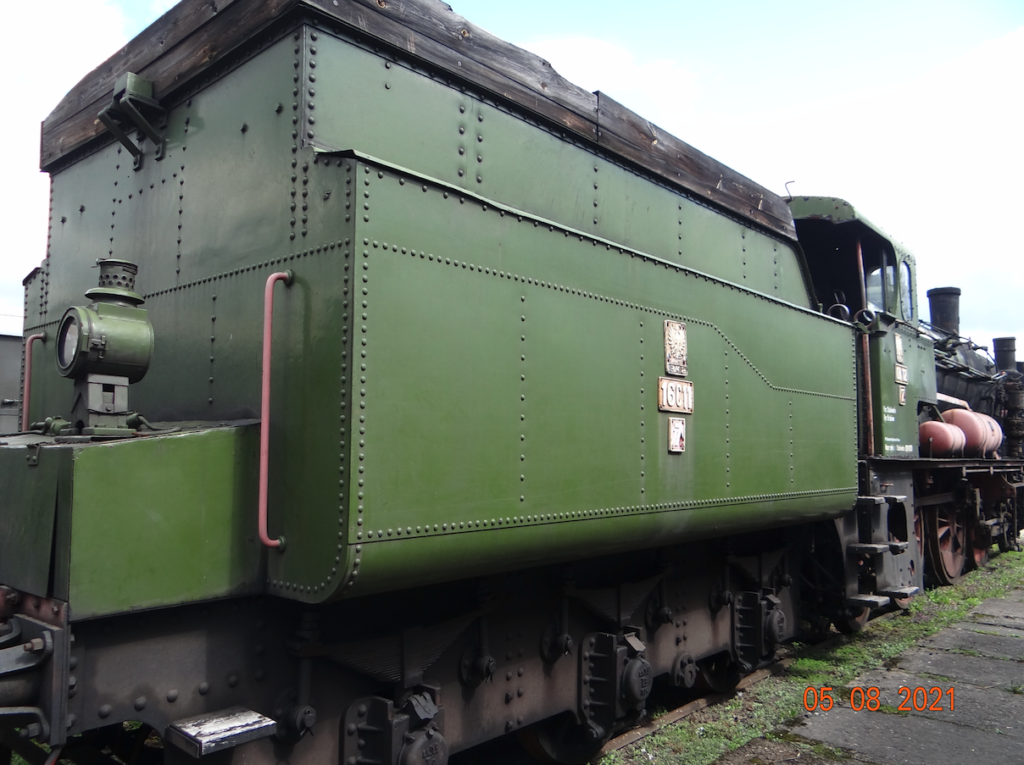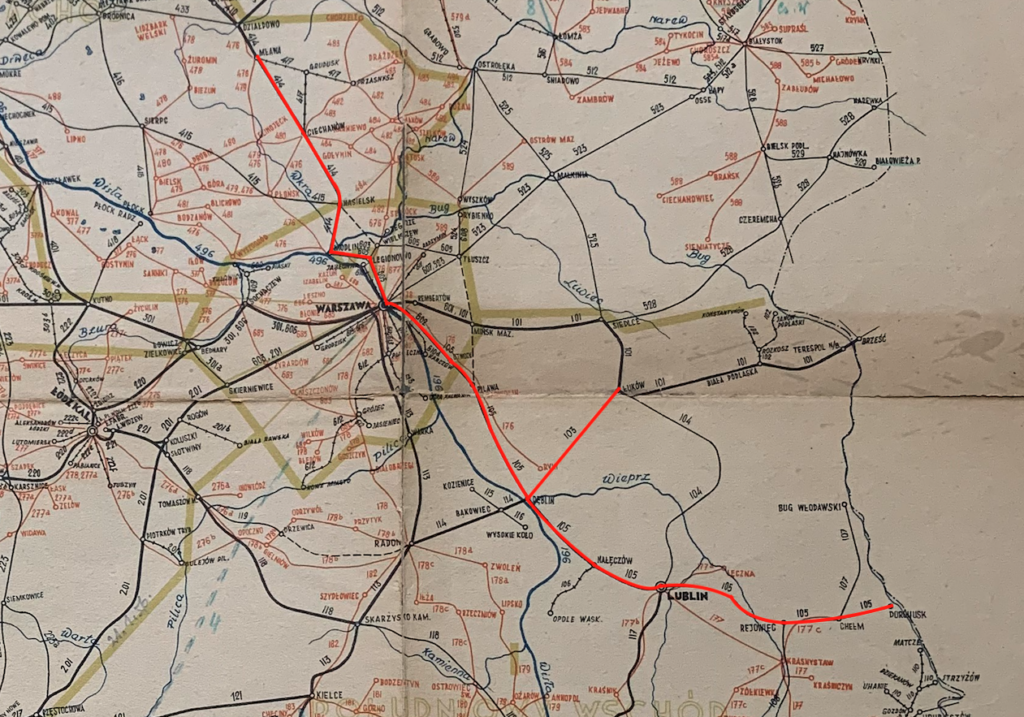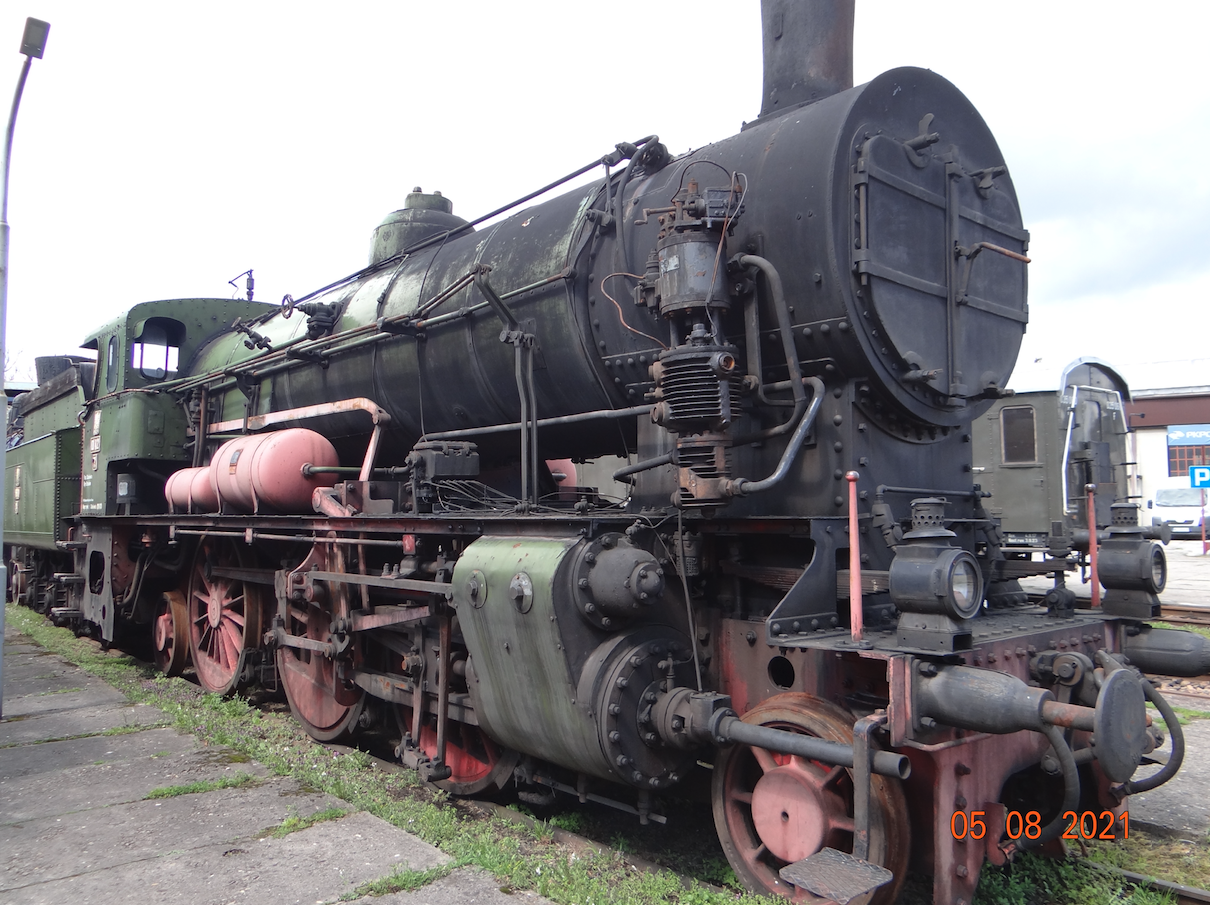Warszawa 2025-02-26
The Vistula Railway.



The Vistula Railway was the fourth railway line in the Moscow Partition. It was named Привислинская железная дорога (Vistula Iron Road). The line was managed by the Vistula Iron Road Company – Leopold Kronenberg. The length of the line was 522 km and was built in the tsarist gauge of 1524 mm. The line was opened on August 29, 1877.
The concession for the construction of the Warsaw Circumferential Line and the Vistula Railway was issued on 22 February 1874, in the form of an act. The construction was commissioned to the Vistula Railway Joint-Stock Company. The direct execution of the project was commissioned to Leopold Kronenberg, who managed the company’s work.
The line was built exclusively in the Kingdom of Poland. At that time, it ran from the Warsaw Circumferential Line in Praga through the stations; Mława (border station) – Modlin – Warsaw – Dęblin – Lublin – Chełm. The line was then built by the Muscovites to Kowal. The main purpose of the line was to connect the fortresses of the Muscovite state, by fast rail transport. These were the fortresses; Kowal (in Volhynia), Chełm, Lublin, Dęblin (Ivano-Frankivsk), Warsaw. In Volhynia, the railway was to connect the next fortresses: Lutsk, Rivne, Dubień. From Warsaw, the railway continued north through Modlin (Nowogieorgiewsk) to Mława, near the border with the Germanic brothers. The line was connected by Działdowo – Iława – Malbork – Tczew to Gdańsk. In Warsaw, the line connected with three other lines: Warsaw-Vienna, Warsaw-Petersburg and Warsaw-Terespol. 24 stations were planned on the route. In 1887, the company employed 2,364 railwaymen.
The Warsaw main station was to be the Warsaw-Praga station, which was built in Nowy Bródno. However, the station was built as a wooden structure, not durable. The more important station in Warsaw was the station at the Citadel, currently the Gdański station. At the beginning of the 20th century, the name was changed to the Kowelski station. It was destroyed in August 1915, during the retreat of the Muscovites from Warsaw, and after the Great World War, the Gdańsk Station was built in this place.
One of the most important and impressive stations on the entire route was the Main Station in Lublin, built in 1877. In the summer of 1877, the first wooden but impressive railway station in Chełm was opened.
In 1894, in the vicinity of Warsaw, the Vistula Railway had stops in; Nowy Dwór, Jabłonna, Nowa Praga, Wawer, Otwock. In 1938, the line ran through 13 stations and passenger stops: Warsaw Choszczówka, Warsaw Płudy, Warsaw Żerań, Warsaw Toruńska, Warsaw Praga, Warsaw Olszynka Grochowska, Warsaw Gocławek, Warsaw Wawer, Warsaw Anin, Warsaw Międzylesie, Warsaw Radość, Warsaw Miedzeszyn, Warsaw Falenica.
In 1896, the Vistula Railway was merged with the Warsaw-Terespol Railway into the Vistula Railways, and in 1897 the Iwangorod-Dąbrowa Railway was included in their composition.
On August 17, 1877, the Mława – Kowel railway line was ceremonially opened.
The total length of the line, including branches managed by the Vistula Railway, was 540 km. To launch the Vistula Railway, 181 bridges and viaducts had to be built, including 76 iron ones. 27 stations were built, including only two brick stations; in Mława and Lublin.
In 1878, the line’s rolling stock consisted of 36 steam locomotives, 700 freight cars and a dozen or so passenger and mail cars. One passenger-mail train, one passenger-freight train, four freight trains and two military trains were permanently launched. The passenger cars were from Class 1 to Class 4. There were separate compartments for smokers. Drinking alcohol was prohibited on the train, and drunk people were not allowed on. These people were not refunded for their tickets.
The press of that time recalled such a case. A steam locomotive released from Lublin had a breakdown. A spring in the locomotive broke and the locomotive overturned. The driver and his two assistants were injured. The locomotive could not be towed. At that time, a train from Warsaw was launched, which reached the immobilized locomotive. The passengers transferred to a train sent from Lublin and thus completed their journey. The locomotive was removed the next day.
The first railway disaster occurred on the night of October 15/16, 1877, near the Dorohusk station. The Kovel – Warsaw train slid down an embankment together with the track. There were many injuries.
The residents of the Lublin region were most pleased with the construction of the line. They were able to export their agricultural produce from the fertile region of Poland to the Dąbrowa Basin and to Gdańsk. Products that were not yet known here were brought to Lublin. It was a historic opportunity and a real economic leap. Although the train journey took several hours, it was much shorter than the stagecoach. Merchants came to Lublin looking for good trade offers, as well as manufacturers, artists and politicians. Some towns became so-called natural habitats, such as Nałęczów, which attracted writers, poets and painters.
The brick station in Lublin was expanded several times due to the constantly increasing traffic. It lost its original style long ago and is now one of the most beautiful stations in Poland.
The Vistula Railway was a key project that contributed to the economic and infrastructural development of the regions through which it ran, and its legacy is still visible in the Polish railway system.
The Vistula Railway was soon followed by the Ivangorod-Dąbrowa Railway, or Dęblin-Dąbrowska Railway, which connected Dęblin with the Dąbrowa Basin. The railway was built between 1884 and 1887. The line was intended to improve military logistics and economic integration within the Muscovite Empire, particularly in the strategically important western regions. The railway connected the city of Ivangorod (Dęblin) with Dąbrowa Górnicza, a major industrial center. This route facilitated the transport of hard coal and other industrial products from the Dąbrowa Basin, a key industrial region in Poland. Due to its location and the time period in which it was built, the Ivangorod-Dąbrowa Railway played a key role in the movement of troops and military supplies. This was especially important during the Great World War, when the region was the site of intensive military operations. After the end of the Great World War and the rebirth of Poland as an independent state, the railway network, including the Ivanogrodsko-Dąbrowska line, became part of the newly established Polish State Railways.
In 1887, the entire route of the Ivanogrodsko-Dąbrowska Railway, construction of which began in 1882, was completed. Several branches were then built, including to Koluszki, enabling the transport of coal from the Dąbrowa Basin and fabrics from weaving factories in the Łódź region to the rest of the Kingdom of Poland and into the Muscovite state. This raised the profile of the Ivanogrodsko junction station and ensured its development. The Ivanogrodsko-Dąbrowska Railway represents an important chapter in the history of Poland and the wider Eastern European transport infrastructure, reflecting the interplay of economic, military and social forces during the transformation of the region.
Construction of the Vistula Railway.
First, a route was built that connected Ivano-Grod – Lukov. This line was intended to connect the Ivano-Grod fortress with the Warsaw-Terespol railway, which ran through Lukov, and thus with other fortresses: Brest and Modlin, and indirectly also with the Warsaw Citadel. The construction of this section was a requirement for obtaining a concession to build a railway route along the Vistula, because the Moscow authorities viewed the construction of the railway mainly in military and strategic terms. The Moscow state is always preparing for war, and the existence of its citizens is unimportant to them.
At the end of 1874, the construction of the Vistula Railway began. Construction work began in several places at the same time. Almost 25,000 workers were hired for the work. They were mainly locals and people from neighboring governorates. The health of the workers was supervised by one doctor and one paramedic. In the event of a serious accident, the injured were directed to the hospital in Warsaw, Krasnystaw or Luboml. But there were also fatal accidents. The entire line was divided into 8 sections. 26 stations and 189 bridges and culverts were designated. The Mlawa – Kovel line was 433 versts long, and with the Łuków – Dęblin section it was 491 versts long, which is about 524 km. 1 verst = 1066.78 m. The construction cost was to be 20.75 million rubles. The ruble is a kind of Russian currency. When the land for the line was purchased, 90 million rubles had already been paid. The payments were made by bankers; Kronenberg and Błoch. Both had 100% shares. In reality, the rate was set at 25-30 rubles per morgen. This was 1/4 of the market value. There is no doubt that corruption was rampant. This was reflected in thousands of complaints from aggrieved owners addressed to the construction management. The completion of the works was planned for May 1877, but the delay was only three months.
The line was designed in accordance with European standards. The longest bridge on the Narew was 105 fathoms long. The following bridges; on the Bug 75 fathoms. On the Wieprz 60 fathoms. On the Turya 40 fathoms. On the Wkra and Bystrzyca 25 fathoms each. On the Świder 15 fathoms. Four viaducts were built, each 10 fathoms long. The maximum distance between stations was 25 versts, between Praga and Otwock. In accordance with the standards, water supply devices for steam locomotives were designed. The commercial speed of passenger trains was 35 versts/hour (37 km/h), and of freight trains 20 versts/hour. These were lower speeds than previously planned. The first timetables predicted a travel time on the Lublin – Warsaw route of less than 7 hours. Train traffic was arranged according to St. Petersburg time. A ticket cost; Class 1 – price 4 rubles 89 kopecks. Class 2 – price 3 rubles 67 kopecks. Class 3 – price 2 rubles 4 kopecks.
Initially, the line connected Mława with Kowel, passing through cities such as Warsaw, Dęblin, Lublin, Chełm, Rejowiec. What’s more, the Iwanogród (Dęblin) station was a junction station from the very beginning. Later, the route was extended and modified, including branch lines. It allowed the transport of agricultural products, raw materials and industrial goods. The line was equipped with the infrastructure necessary to handle large flows of goods and passengers, including stations, railway stations, sidings, water towers, locomotive sheds, warehouses and bridges. This route was supplemented by a branch to Brest-Litovsk via Łuków. Initially, the Vistula Railway was built according to the Moscow broad gauge standard (1524 mm), but during the Great World War, part of the line was converted to the European standard gauge (1435 mm). During the Great World War and the front was moving east, the Austrians and Germans rebuilt the track to normal width. At the end of World War II, the Muscovites tried to rebuilt the tracks to wide width again.
In 1887, construction of the Chełm-Włodawa-Brest railway connection began.
Further history.
In 1891, the Muscovites began to nationalize the railways in the Kingdom of Poland. This was combined with ruthless Russification. Polish workers were removed from independent positions on the railways. A special commission was formed to vet Polish workers. In July 1897, after 20 years, the private concession for the Vistula Railway expired and the line was nationalized. The Vistula Railways included the Terespolska Railway, the Ivanogródzko-Dąbrowska Railway, the Siedlecko-Modlińska Railway, and the Brzesko-Chełmińska Railway. In 1898, the new company was named the Vistula Treasury Railways. Additionally, the Polish language used on the Warsaw-Vienna Railway was removed. At the same time, the conversion of standard gauges into wide gauges began on this route. This work was not completed until the outbreak of the Great World War.
In mid-1915, Austrian troops were already in the territory of the Kingdom of Poland, and a little later the Prussians. Austro-Hungarian troops began to rebuild the lines, which the Muscovites had unscrewed and began to build new connections. It was at this time that Rejowiec station became a junction station. A single-track line was built from Rejowiec to Galicia. The work was completed in 1916.
In mid-1918, the Polish Railway Directorate was established in Radom. On the other hand, all stations east of Lublin were managed by the military; the Polish Military Railway Board, until 1921.
In 1919, 4 lines branched off from Lublin station: Nadwiślańska to Warsaw. To Kowal. To Łuków. To Dęblin.
In the interwar period and after World War II, the Warsaw-Lublin line was modernized and transformed many times to meet growing transport needs. First of all, it was electrified with 3 kV DC current, on the entire section that is currently in Poland.
Today, the route of the former Nadwiślańska Railway is an important element of the Polish railway network, although it operates under different names and is managed by modern railway companies. Modernization of the railway infrastructure, including electrification and automation, has improved the efficiency and comfort of travel on these routes.
Written by Karol Placha Hetman
